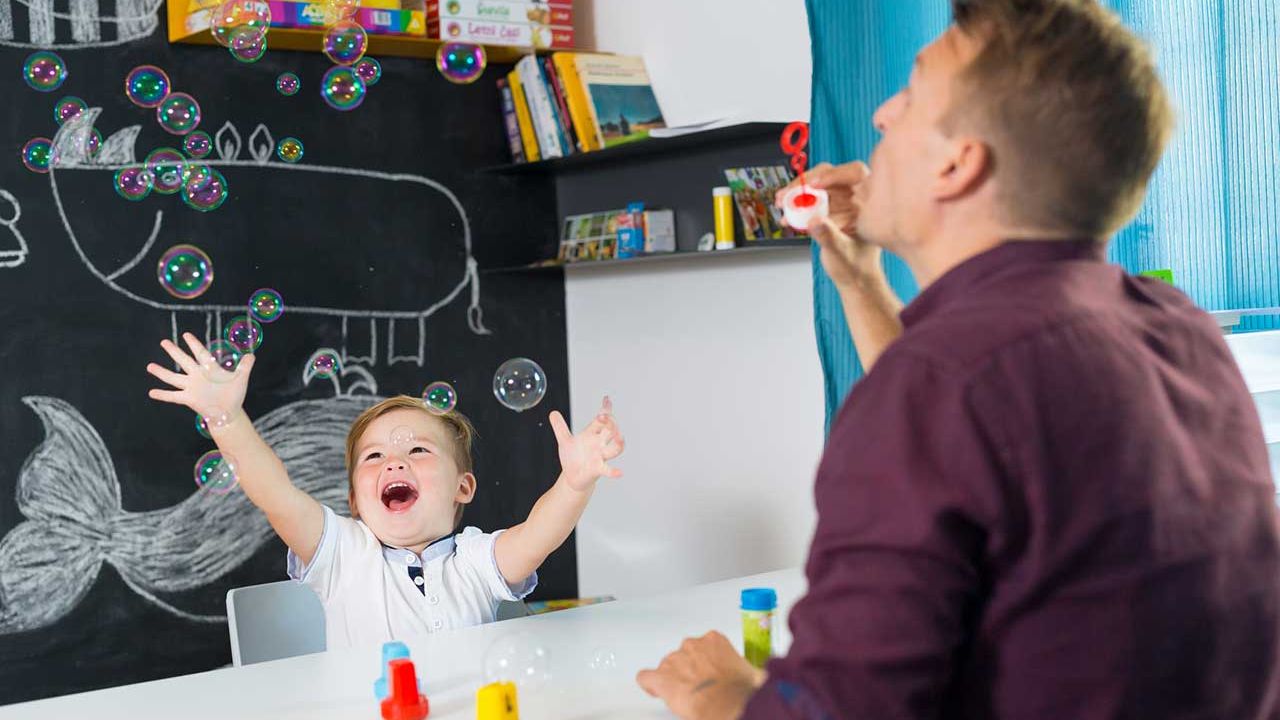3 Ways to Make the Most of Therapy Time
Feb 27, 2025
As parents and educators, we often wish children could have hours of therapy with professionals to support their early development. But here’s something important to remember: the real impact of intervention isn’t just what happens during therapy sessions—it’s what happens in between, in the child’s everyday environment!
That doesn’t change the fact that many families struggle to access enough support, leading to stress and leaving children without the interventions they need. The system isn’t perfect, and that’s a real challenge.
Young children learn best through play and connection with their families. Instead of focusing only on getting more therapy time, the key is making the most of the sessions you do have and finding simple ways to incorporate those strategies into daily life.
Professionals bring valuable expertise in child development and disability, but you are the person who knows your child best. You are your child’s expert. The goal should always be to build a partnership with professionals so that you can support your child’s progress together.
Whether your child receives intervention through public services or private therapy or if professionals visit their preschool or school, these three simple tips will help you feel more equipped to support their development beyond each session.
1. Be Present and Observe
Sitting in the waiting room while your child is in therapy means missing a valuable learning opportunity. Therapy sessions aren’t just about what happens in that moment—they’re about equipping you with the tools to support your child at home or in the classroom.
Being present allows you to see exactly what strategies the professional uses so you can continue them outside of sessions. Plus, your child is more likely to feel safe and confident when you’re there, making the session more productive.
While I work with older children I’ve known for years, and some parents prefer I work one-on-one with their child at this stage, we still make time to discuss the session afterwards. I always explain what has worked and how parents can continue supporting their children at home.
Generally, I encourage all parents working with therapists to ask to be involved in the session. It’s a chance to learn directly from the professional and to understand how best to support your child’s development.
2. Understand the Why Behind the Activities
Many therapy activities I use in my clinic look like play—blowing bubbles, singing Twinkle Twinkle Little Star, or playing with small farm animals. However, these are carefully chosen activities designed to target specific skills.
Early intervention professionals always work towards developmental goals, whether supporting communication, strengthening fine motor skills, or building social interaction. Nothing is random.
To get the most out of sessions, ask questions to your therapist:
- Why are you doing this activity?
- What skills are you targeting?
- How will I know if my child is learning from this?
Most professionals will be delighted to explain their approach. Some may explain it as they go, while others prefer to chat at the end of the session. Either way, understanding why an activity is used will help you apply similar strategies at home.
3. Ask for Homework!
One of the most important things to understand about early intervention is that it’s not just about what happens in therapy—it’s about creating a supportive, stimulating environment for the child every day.
At the end of each session, ask the therapist: What activities can I do at home (or in the classroom) to build on today’s session?
For example, when I am teaching young children to match shapes using a shape sorter, I encourage parents to reinforce this skill in everyday routines with simple activities like:
- Posting letters in a letterbox
- Placing a slice of bread in the toaster
- Putting a key in a keyhole
- Dropping the round bath plug into the drain
These little moments help children see how shapes fit together in the world around them, making learning more natural and meaningful!
Work with your child’s therapist to find simple, everyday ways to support developmental goals.
I know it’s not always easy, and support isn’t always available when you need it.
But whenever you get to work with professionals, make it count. These three strategies will help you feel more confident and bring therapy into everyday moments—because you play the most important role in your child’s learning and development!
Your Turn
How do you make the most out of therapy time? What strategies or ideas have you found helpful for implementing what you learn in therapy sessions at home?
I’d love to hear your thoughts—drop them in the comments below!
👉 Want more practical tips? Join my newsletter, where I share simple ways to support child development at home and in the classroom—plus insights from my journey as a mum of an autistic boy.

